#one a.m. 1916
Text
On April 29, 1960, One A.M. was re-released in Finland.
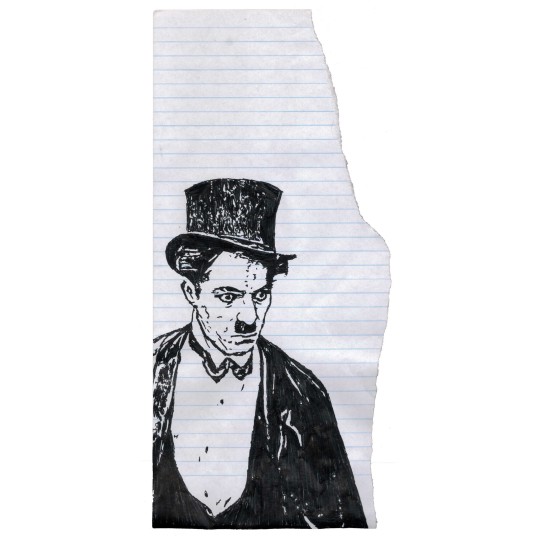
#one a.m.#one a.m. 1916#charlie chaplin movies#charlie chaplin#comedy film#comedy movies#screwball comedy movies#screwball comedy movie#screwball comedy#comedy shorts#1910s#silent films#silent film#movie art#art#drawing#movie history#pop art#modern art#pop surrealism#cult movies#portrait#cult film
0 notes
Text

"One A.M." 1916
17 notes
·
View notes
Text
'Charlie Chaplin: The Mutual Comedies' – distilled comic genius on HBO Max and Criterion Channel and free on Kanopy
‘Charlie Chaplin: The Mutual Comedies’ – distilled comic genius on HBO Max and Criterion Channel and free on Kanopy
In 1914, a young British music hall comedian making a tour of the U.S. signed a contract to make his first movies with Keystone studios. Charlie Chaplin developed his Tramp persona working with slapstick specialist Mack Sennett for $150 a week and in less than a year was hired away by rival studio Essanay at $1250 a week and given control over his own pictures. His short comedies, which he also…

View On WordPress
#1916#1917#Behind the Screen#Charlie Chaplin#Criterion Channel#Easy Street#Edna Purviance#Eric Campbell#HBO Max#Kanopy#One A.M.#The Adventurer#The Count#The Cure#The Fireman#The Floorwalker#The Immigrant#The Pawnshop#The Rink#The Vagabond
0 notes
Text
Oswald Boelcke - Part 3
Der Meister
The war diary of the squadron reads on August 27th, 1916: “Jagdstaffel 2 meets under the leadership of Captain Boelcke. Officers and enlisted men come from different departments. Existing: 3 officers, 64 non-commissioned officers and enlisted men. - Accommodation: officers live in Bertincourt, enlisted men in barracks. - Airplanes: there aren't any yet. - Activity: setting up the airport.”
Boelcke had a lot of work to do in the following weeks to get the unit fully operational. In early September Richthofen and Boehme arrived, as well as Max Müller (a very successful Bavarian pilot, see: https://www.tumblr.com/subtile-jagden/714297390685929472/just-finished-this-book-about-max-ritter-von?source=share).
On the 2nd September Boelcke used one of the three so far arrived aeroplanes and shot down his 20th victory. This highly puplished event hit like a bomb; after all, the people hadn't heard from Boelcke for almost two months. As Boelcke was almost the only one with a plane, he flew a lot and shot down five enemies in the first half of September.
Finally, on the 17th September some more machines arrived so that the Staffel could fly together for the first time, resulting in victories for Boelcke, Böhme, Richthofen and Reimann. About his new students he writes his parents: “My gentlemen are all very passionate and eager and capable, but I still have to train them to properly work together – in their eargerness to achieve something, they sometimes still are like young dachshunds.”
Boelcke, like most of the pilots, had no personal contempt against his opponents: “We have nothing at all against the individual pilot, we only fight his flying against us.”
Just as they were able to complete their set-up, English bombers and artillery attacked Bertincourt, causing Boelcke to move his Staffel. By then Boelcke was able to up his victory list to 31. The fighting on the Somme weakened significantly, partly because the fighter pilots' excellent performance ensured that enemy aviators were no longer able to see behind German lines. Boelcke enjoyed great popularity with his men. He was strict and demanding but never without reason. “It is difficult to express with what devotion and love we clung to him in our inner circle of comrades. Never before has a comrade been loved by his comrades, a superior by his subordinates, as he has.”
In his last ever letter, Boelcke told his parents about his 35th victory on the 17th October. On the 26th he shot down number 40. On the 28th his life was over.
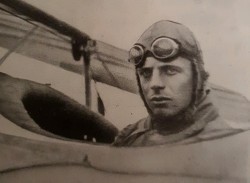
The End
The stress of the hard fights and worries about the future did not go unnoticed. “My captain became more and more serious and haggard”, reported Boelcke's orderly. On some day he went up seven times and on the ground he had a lot of organisational work to do. He was supposed to go on leave but “I am needed here!”.
At seven a.m. first reports of English planes over the lines alerted Boelcke to start with his own men to fight them off. Four times they went up, all that before it was even noon. At around five p.m. they were called upon once more for help.
Oswald Boelcke is undefeated in the air. No enemy brought him down. It was unfortunately one of his own man who collided with him in what was a pure accident. Erwin Böhme, handpicked by Boelcke to join him and a great admirer of him, writes to his fiancé about the tragic event: “Boelcke and I had an Englishman between us when another enemy, being chased by friend Richthofen, cut our way. Boelcke and I, hampered by our wings, didn't see each other for a moment while we were avoiding each other at lightning speed - and that's when it happened. Our planes brushed against each other, just a light touch, but fatal at the high speeds. Fate is usually so cruelly unreasonable in its choice: only one side of the undercarriage was torn away from me, the outermost piece of the left wing was torn away from him. I had to see how he couldn't straighten his machine anymore and how he crashed next to a battery position. I was utterly distraught, but still had hope. But when we got there in the car, the body was already being brought towards us. He died instantly at the moment of impact. Boelcke never wore a crash helmet and didn't buckle up in the Albatros either - otherwise he might have survived the not-too-violent impact.”
Manfred von Richthofen also reported on the incident: “I look around and observe how Boelcke is attacking his victim about 200 m next to me. A good friend of his flies by. Both shot - the Englishman was about to fall at any moment. Suddenly, an unnatural movement can be observed in the two airplanes. I had never witnessed a mid-air collision and had imagined it to be much different. It was just a touch. But at the speed that such an airplane has, every light touch is a violent impact.”
Interesting is the fact, that Richthofen doesn´t mention going after an enemy himself, crossing in front of Boelcke and Böhme. Maybe he did not realize that he did, maybe it was not something that the public should know. Richthofens account is in his biography “Der Rote Kampfflieger”, published at the hight of his popularity. To give the impression that he was partially to blame for Boelcke's death would be fatal.
In the end no one was to blame as it was a truly unfortunate accident. But of course Boehme was devastated. “Outwardly, I've got myself under control again to some extent. But in the quiet hours I always remember the horrible moment when I had to see my master and friend fall next to me - the nagging question arises again and again: Why did he, the irreplaceable one, and not I have to be the victim of this blind fate - because neither he nor I was to blame for the disaster?!”.
When Boelckes family came to escort his body home, they met with Böhme and a friendship betweem them was formed that lasted until Boehmes own death one year one month and one day after Boelcke´s.
The death of this national hero sent a shockwave through the Empire and the German front lines. Boelcke is no more!
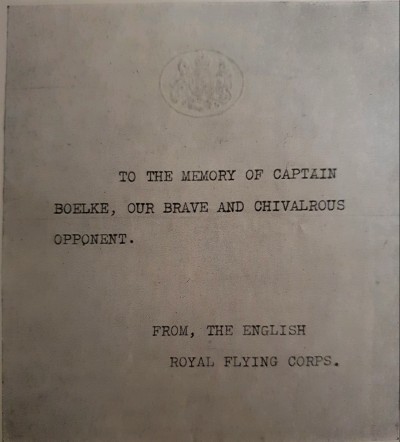
On the 31st October 1916 the funeral ceremony took place in Cambrai. The coffin was laid out in front of the altar of the cathedral. Crown Prince Rupprecht of Bavaria appeared at the head of the generals, and General von Below represented the Kaiser. Manfred von Richthofen carried Boelcke's Ordenskissen (pillow with all his medals).
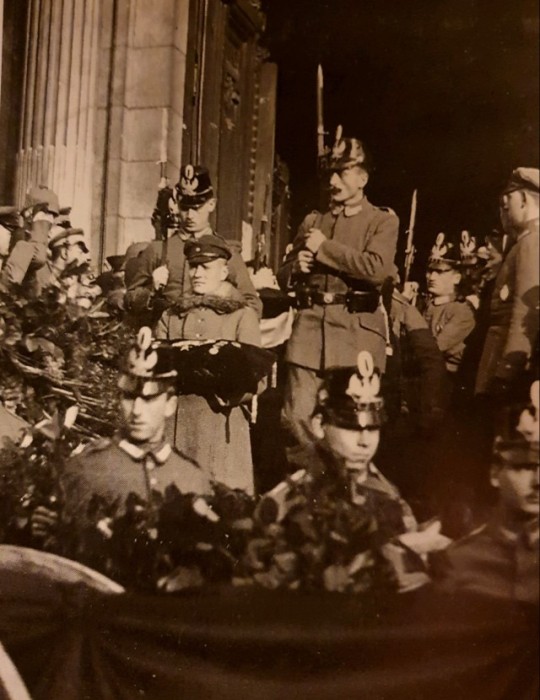
He was laid to rest in his home town of Dessau.
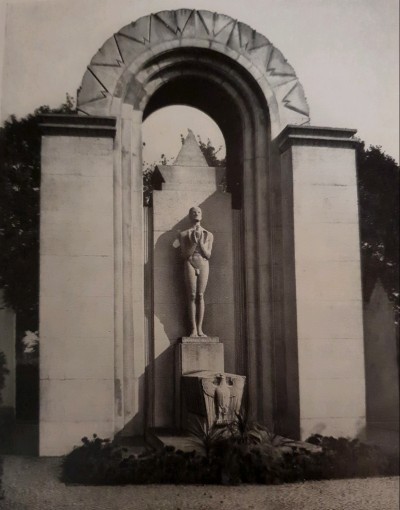
On the front the fight rages on. New pilots filled the gaps of the fallen. Inspired by Boelcke's spirit, best expressed by General Thomsen: "I want to be a Boelcke!"
Sources:
Boelcke, by Prof. Dr. Johannes Werner (1932)
Der Rote Kampfflieger, by Manfred von Richthofen (1917)
Briefe eines deutschen Kampffliegers an ein junges Mädchen, by Prof. Dr. Johannes Werner (1930)
Immelmann, der Adler von Lille, by Franz Immelmann (1934)
9 notes
·
View notes
Text
The Top 10 of the '10s (Part 1)

Many moons ago I noticed something about my history of watched films on Letterboxd. There was a huge drop off in the amount of films I had seen pre-50s. I'd say it's normal to have seen more recent movies than older ones, but I didn't like just how sparse my viewing was of those earlier decades. So I set out on a mission to familiarize myself with every year I was missing. I decided to watch 5 of the most popular films from every year that ever had films. I finally finished the 10s today. The 1890s and 1900s are also very interesting, but the 10s are when the film industry really began to take off and movies took a form more recognizable to modern audiences. Maybe some other time I'll talk about my favourites from those more experimental decades, but today I wanna talk about my 10 favourite films from the decade where modern film was born.
10. The Rink (1916, dir. Charlie Chaplin)
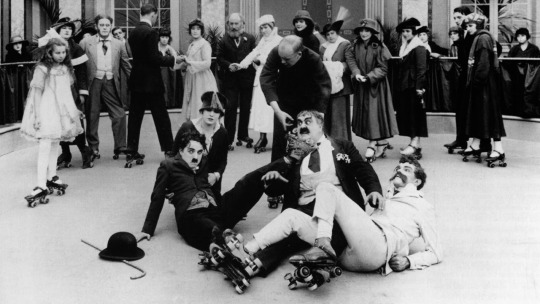
The Rink is a comedy where Chaplin really gets to show his strength at creating gags that continue to build, and his surprisingly strong roller skating skills. By this point, the tramp character is really coming into his own and Chaplin continues to invent new and exciting ways for him to be stupid. The specificity in the action and choreography make this occasionally feel more like a Keaton short than a Chaplin one.
9. One A.M. (1916, dir. Charlie Chaplin)
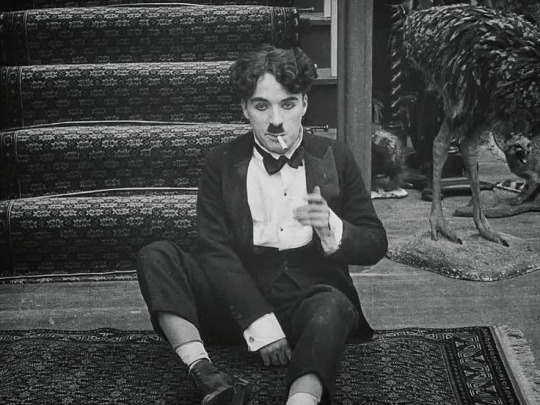
One A.M. is an incredibly interesting short for Chaplin as it's just him performing by himself on one small set. He plays some guy who comes home piss drunk at One A.M. and struggles to navigate the foyer of his own home. It really speaks to Chaplin's talent as a performer that this is as consistently entertaining as it is. Maybe there's something just primordially funny about people failing at simple tasks, but he seems to squeeze every ounce of potential out of this setup. It feels like this guy is Sisyphus if he was crushed by the weight of his own stupidity. Great stuff.
8. Coney Island (1917, dir. Roscoe Arbuckle)

While he's now remembered as one of the "big three" silent comedians, Buster Keaton got his start acting in smaller roles in films by and starring Roscoe "Fatty" Arbuckle, who was also funny in his own right. I would describe the plot here but it's pretty meandering and unfocused, all you need to know is Fatty is hiding around Coney Island. The plot being weak doesn't really matter in this kind of short, it's just a vehicle for gags which is all it needs to be. Adding a theme or moral to this through a more focused story would honestly bring the short down. There are some great gags here with Buster getting his girl stolen from him and Fatty crossdressing (something he apparently did a lot), as well as plenty of slapstick and humour derived from carnival games. It gets incredibly ridiculous and is not at all interested in being grounded or feeling real. This whole style is a nice change of pace compared to some other silent comedies that tried to be something they weren't. This is primarily interested in getting you to laugh, and it gets there in some quite impressive ways. Something I do want to note is that the original release of this movie has an extended ending which is super racist. Modern restorations use the later versions which cut this out, but it still exists and is pretty gross.
7. The Unchanging Sea (1910, dir. D.W. Griffith)

The Unchanging Sea is a much more emotional and subtle film than much of Griffith's later plot-focused work, however, the ways it stands out from the style he went on to refine in this decade is what makes it so interesting and memorable. It's really a film about longing and the quiet sadness and isolation women experienced in this time period. I've always maintained that despite him being behind on other groups (i.e. being a vile racist), Griffith's films were always much more feminist than his contemporaries. Perhaps his willingness to portray complex female characters with unique issues was a factor in his early success. For the women in The Unchanging Sea, the work of their husbands out on the open ocean transfers them to a liminal state, unable to tell if their lover and possibly only friend would return until the moment he did. The sea does not care for their sorrow and their concern, it's a force much greater and mysterious than any fight they could muster. The light plot here lets us sit in the anxiety of these women and understand the way that their experience of life is fundamentally limited by the circumstances they were born into. There isn't even any real way to protect each other, as the ways of love for a woman in this time and place are a force more powerful than their pleas for other women to stay alone and self-reliant. The Unchanging Sea is about how human connection is all we have yet for many it's a prison. It's a kind of story that was only possible by someone like D.W Griffith when he and film were in this more primordial state, more willing to experiment and craft experiences that differed from the stories pioneered by other mediums, and is a shining example of exactly why this period of film history is so worth returning to.
6. The Cook (1918, dir. Roscoe Arbuckle)

Don't worry, this post isn't all silent comedy shorts. But in said genre, The Cook stands above the rest. This one feels a bit more focused than Coney Island, I know I ranted about how a proper plot wasn't super important in that one, but it did still feel a bit too disconnected overall, where here there's a full funny throughline from beginning to end. Not a throughline that's really trying to say anything, just a method to build tension and add onto gags to make them the best they can be. There are a lot of setups that take quite a while to pay off, often with several gags in between them, as well as some gags that feel like Rube Goldberg machines. It's an impressive piece of work that clearly took a lot of planning and care to execute. It has workplace safety violations and a cute dog, what more do you want?
5. Dante's Inferno (1911, dir. Francesco Bertolini, Giuseppe de Liguoro, and Adolfo Padovan)
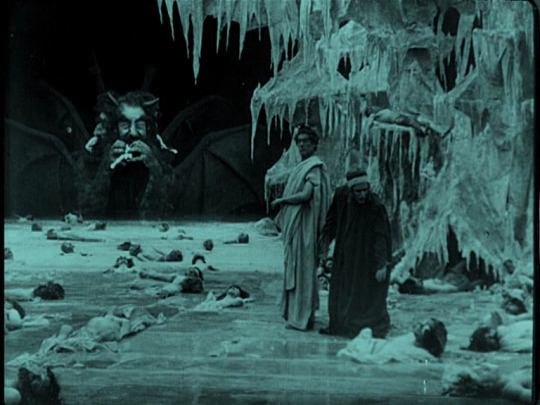
Dante's Inferno/L'Inferno is the oldest surviving feature film, and the first one ever produced in Italy. I hate to call a film "an experience" but it really applies here. The narrative simply consists of two guys wandering around hell for 70 minutes. It's just an excuse to look at some really gorgeous visuals. The sets and effects in this are gorgeous, and the film seems determined to keep outdoing itself in its scope and ambition. This is much more inspired by Meliés than the likes of Griffith. It's something you look at and take in like a painting. You really need to just appreciate the artistry and imagination. It doesn't work for everyone, I'd forgive you if you got bored, but for me, it's a wonderful and astounding piece of art, that exemplifies the facet of early film to portray sharp and impactful images.
I'm realizing now that I have much more to say about these films than I expected, even ones that didn't make it into the top 10. So I'll end this post here! Look forward to seeing the top 4 and a ton of honourable (and dishonourable) mentions.
6 notes
·
View notes
Text
The 100 Best Films of the 1920s (and before)

The shiniest jewels of the silent age, ranked and rated, high to low:
1. The Gold Rush (1925) {1942 Version} ★★★★★★★★★★
2. The Kid (1921) ★★★★★★★★★★
3. The Last Command (1928) ★★★★★★★★★★
4. Sunrise: A Song of Two Humans (1927) ★★★★★★★★★★
5. Steamboat Bill, Jr. (1928) ★★★★★★★★★½
6. 7th Heaven (1927) ★★★★★★★★★½
7. The General (1926) ★★★★★★★★★☆
8. Safety Last! (1923) ★★★★★★★★★☆
9. The Passion of Joan of Arc (1928) ★★★★★★★★★☆
10. The Love Parade (1929) ★★★★★★★★★☆
11. The Man Who Laughs (1928) ★★★★★★★★★☆
12. Why Worry? (1923) ★★★★★★★★★☆
13. The Last Laugh (1924) ★★★★★★★★★☆
14. Sherlock Jr. (1924) ★★★★★★★★★☆
15. Wings (1927) ★★★★★★★★★☆
16. The Kid Brother (1927) ★★★★★★★★★☆
17. Varieté (1925) ★★★★★★★★★☆
18. Un Chien Andalou (1929) ★★★★★★★★★☆
19. Lucky Star (1929) ★★★★★★★★½☆
20. The Freshman (1925) ★★★★★★★★☆☆
21. The Circus (1928) ★★★★★★★★☆☆
22. The Big Parade (1925) ★★★★★★★★☆☆
23. Pay Day (1922) ★★★★★★★★☆☆
24. Seven Chances (1925) ★★★★★★★★☆☆
25. One Week (1920) ★★★★★★★★☆☆
26. Easy Street (1917) ★★★★★★★★☆☆
27. Girl Shy (1924) ★★★★★★★★☆☆
28. The Pilgrim (1923) ★★★★★★★★☆☆
29. A Dog's Life (1918) ★★★★★★★★☆☆
30. The Penalty (1920) ★★★★★★★★☆☆
31. The Cameraman (1928) ★★★★★★★★☆☆
32. The Navigator (1924) ★★★★★★★★☆☆
33. It (1927) ★★★★★★★★☆☆
34. Shoulder Arms (1918) ★★★★★★★★☆☆
35. College (1927) ★★★★★★★★☆☆
36. Our Hospitality (1923) ★★★★★★★★☆☆
37. Speedy (1928) ★★★★★★★★☆☆
38. Dr. Mabuse, the Gambler (1922) ★★★★★★★★☆☆
39. The Immigrant (1917) ★★★★★★★★☆☆
40. For Heaven's Sake (1926) ★★★★★★★★☆☆
41. Cops ★★★★★★★★☆☆
42. Spies (Spione) (1928) ★★★★★★★★☆☆
43. A Night In The Show Spies (1915) ★★★★★★★★☆☆
44. Flesh and the Devil (1926) ★★★★★★★½☆☆
45. The Wind (1928) ★★★★★★★½☆☆
46. One A.M. (1916) ★★★★★★★½☆☆
47. Street Angel (1928) ★★★★★★★½☆☆
48. Napoleon (1927) ★★★★★★★½☆☆
49. The Thief of Bagdad (1924) ★★★★★★★½☆☆
50. Liberty (1929) ★★★★★★★☆☆☆
51. Never Weaken (1921) ★★★★★★★☆☆☆
52. The Student Prince (1927) ★★★★★★★½☆☆
53. Faust (1926) ★★★★★★★½☆☆
54. The Adventurer (1917) ★★★★★★★½☆☆
55. The Cocoanuts (1929) ★★★★★★★½☆☆
56. The Play House (1921) ★★★★★★★½☆☆
57. The Black Pirate (1926) ★★★★★★★½☆☆
58. Spite Marriage (1929) ★★★★★★★½☆☆
59. The Matinee Idol (1928) ★★★★★★★½☆☆
60. Dr. Jack (1922) ★★★★★★★½☆☆
61. The Vagabond (1916) ★★★★★★★½☆☆
62. Underworld (1927) ★★★★★★★½☆☆
63. Bardelys the Magnificent (1926) ★★★★★★★½☆☆
64. The Phantom of the Opera (1925) ★★★★★★★½☆☆
65. The Bank (1915) ★★★★★★★½☆☆
66. Sunnyside (1919) ★★★★★★★½☆☆
67. A Cottage on Dartmoor (1929) ★★★★★★★☆☆☆
68. Metropolis (1927) ★★★★★★★☆☆☆
69. Battleship Potemkin (1925) ★★★★★★★☆☆☆
70. Diary of a Lost Girl (1929) ★★★★★★★☆☆☆
71. The Eagle (1925) ★★★★★★★☆☆☆
72. The Count (1916) ★★★★★★★☆☆☆
73. Beggars of Life (1928) ★★★★★★★☆☆☆
74. The Rink (1916) ★★★★★★★☆☆☆
75. Eternal Love (1929) ★★★★★★★☆☆☆
76. Hot Water (1924) ★★★★★★★☆☆☆
77. Asphalt (1929) ★★★★★★★☆☆☆
78. The Music Blasters (1928) ★★★★★★★☆☆☆
79. My Wife's Relations (1922) ★★★★★★★☆☆☆
80. Broken Blossoms (1919) ★★★★★★½☆☆☆
81. Pandora's Box (1929) ★★★★★★½☆☆☆
82. Police (1916) ★★★★★★½☆☆☆
83. The Son of the Sheik (1926) ★★★★★★½☆☆☆
84. Human Sparrows (1926) ★★★★★★½☆☆☆
85. The Crowd (1928) ★★★★★★☆☆☆☆
86. A Trip to the Moon (1902) ★★★★★★☆☆☆☆
87. Nosferatu (1922) ★★★★★★☆☆☆☆
88. The Cabinet of Dr. Caligari (1920) ★★★★★★☆☆☆☆
89. The Hunchback of Notre Dame (1923) ★★★★★★☆☆☆☆
90. Battling Butler (1926) ★★★★★★☆☆☆☆
91. The Boat (1921) ★★★★★★☆☆☆☆
92. The Unknown (1927) ★★★★★★☆☆☆☆
93. The Cat and the Canary (1927) ★★★★★★☆☆☆☆
94. The Sheik (1921) ★★★★★★☆☆☆☆
95. The Marriage Circle (1924) ★★★★★★☆☆☆☆
96. Intolerance (1916) ★★★★★☆☆☆☆☆
97. Ben-Hur: A Tale of the Christ (1925) ★★★★★☆☆☆☆☆
98. The Jazz Singer (1927) ★★★★★☆☆☆☆☆
99. Greed (1924) ★★★☆☆☆☆☆☆☆
100. The Birth of a Nation (1915) ★★★☆☆☆☆☆☆☆
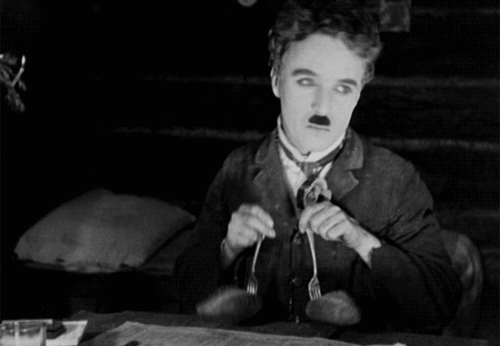

8 notes
·
View notes
Text
Good morning. 🕊🕊🕊

It's almost 07:00 A.M., and it's still dark outside. Which raises the question: does daylight savings time really save light? Not in the scientific sense of course, because it does nothing with light. All it does is slightly juggle the times we are awake. We give up daylight on the front end of our waking moments to have it on the back end. Don't get me wrong, I have no strong opinion about daylight savings time. But somebody sometime thought it was a good idea.
"On July 1, 1908, the residents of Port Arthur, Ontario—today's Thunder Bay—turned their clocks forward by one hour to start the world's first DST period. …
… However, the idea did not catch on globally until Germany introduced DST in 1916. Clocks in the German Empire, and its ally Austria, were turned ahead by one hour on April 30, 1916—two years into World War I. The rationale was to minimize the use of artificial lighting to save fuel for the war effort." - Anne Buckle, timeanddate.com
#backyard birds#birdsphotography#birds of north america#birdwatching#birds#bird#bird photography#bird watching#birding#birdingphotography#birdlovers#birdphotography#birds nature#pigeons#rock dove#rock pigeon#doves
3 notes
·
View notes
Text
Top 10 Must Visit Destinations in Amritsar
The Golden Temple
The Golden Temple is a remarkable and significant location in the Indian city of Amritsar. It is also known by the names Sri Darbar Sahib and Sri Harmandir Sahib. Everyone is warmly welcomed at this temple, where Sikhs unite for prayer, regardless of background. There's an open space surrounding the temple with an artificial pond that looks like it's floating on the water.
There is an extensive corridor that encircles the temple and other buildings. The term "Harmandir" refers to "God's house", and it honors Guru Arjan Sahib, the man who built it. Although the temple was first built in the late 1500s, war damage necessitated a later renovation. The name of the temple comes from its entirely gold exterior.
Wagah Border
The boundary separating Pakistan and India is known as the Wagah Border. At this special area, soldiers from both countries participate in a ritual called "Beating the Retreat." This occurs every evening and is akin to a huge concert. Wagah is similar to a small town, with buildings, roads, and obstacles on both sides of the border.
During the ceremony, soldiers from Pakistan and India march in a disciplined fashion and lower their respective flags. It's like a friendly skirmish. When the sun sets, there is a great deal of cheering and acclaim as the event draws to an end. It serves as a sign of the end of the day and a way for both countries to show pride in their respective countries.
Kesar Da Dhaba
Kesar da Dhaba is a special Amritsar eatery that has been providing delicious mah ki daal and lachcha paratha for almost a century. This dhaba was initially developed in Pakistan's Punjab province. It is located on the small lanes that lead to the Golden Temple from Jallianwala Bagh.
They prepare their delectable food using about thirty kilograms of desi ghee every day. The dhaba is open from 11 a.m. to 11 p.m. and is constantly crowded. They have a 10-item menu with specialties including saag fried, chana, rajma, and palak paneer, but the most popular meal is their mah ki daal-lachcha paratha combo. Kesar da Dhaba started off as a little restaurant in Sheikhupura in 1916. Its owner, Lala Kesar Mal, enjoyed serving roti and mah ki daal with phirni, a special rice dessert prepared using his own recipe, in earthen pots. However, Kesar da Dhaba moved with Mal to Amritsar during the Partition. Over time, the dhaba's menu has grown to include additional Punjabi dishes. Vijay Kumar, the fifty-year-old grandson of Mal, claims that his family possesses the one flawless recipe, which has been handed down through the ages unwritten.
1 note
·
View note
Text
Summer 1916
14.7.16
At 2:30 in the morning I slept rather fitfully, I heard quite a racket outside. In a moment, the inevitable Paulicke rushed into the room and shouted: "Gas attack!” I grabbed my standby can and put on my boots. Vogel, who shares my dugout, couldn't find his gas mask because he had left it somewhere. He danced (Me, bad guy that I am, secretly gloated) from one corner of the dugout to the other shouting, "Oh my God, my gas mask, my gas mask." The first smells of hydrogen sulphide, which suggested phosgene gases, were already wafting through the door. I claimed to already have great trepidation. Vogel built a smouldering fire, sat behind it with a whining expression and sucked on a three-layer cartridge at the top of his lungs. In addition, the 23.5s from last night were banging around in the area, as well as bullets of all kinds. This got on his nerves again, he disappeared into a tunnel entrance and lit a fire there, but soon reappeared half-smoked. I increased his fear by saying: "What if we have to go to the front and you without a gas mask!” -- Finally he ran to the staff quarters to look for a gas mask. When the fire died down, I lay down again.
27.7.16
In the south, especially from the Douchy-Bienvillers road, the English fired bottle mines. Our artillery responded with shell bursts that it was a real pleasure to see the black, yellow and white clouds.
By the way, I'm getting in holiday spirit now. But you don't know whether you might not think back later on this rough life among men with a feeling: Yes, life was rough then, but consecrated to a firm purpose and carefree. War also has its peaceful moods. Tonight, for example, the sounds of an ocarina flow softly into the mild air from a dugout and hardly a rifle shot disturbs the mood. Leaning against the trench wall, a pipe in his mouth, someone is dreaming of something here, a group is sitting there chatting about this and that. Everything is simple and natural.
In any case, this time is better for those who survive it than if they had spent night after night bumming around in smelly pubs and strolling through the big city streets with their hats crooked on their heads and easy women on their arms.
In the evening the company commander came to my dugout for a little chat. Yes, there are very pleasant moments in war.
28.7.16
I gathered people together for a patrol today. In the evening, the platoon leader from the 6th who relieved me, Lieutenant Brauns, came to my shelter for dinner with various good things. He wished me “a shot in the neck and stomach.”
The English machine guns were firing until 11 a.m. At 11:30, Lieutenant Jünger, Ensign Wohlgemut, Private Bartels and Private Birkner climbed over the wire with a loud groan and stalked towards the English trench.
We were sitting halfway between both trenches when we heard a clicking of wire. Immediately afterwards the same noise sounded very close in front of us and we saw the inevitable dark figures.
They disappeared and we crawled closer to a number of figures in front of the English trench. We had already gotten pretty close when the old figures appeared again and seemed to want to get in front of their wire. At the same moment we discovered an insulated conductor wire in front of us. I considered this discovery to be very important and commissioned Wohlgemut to cut off one end of it. While he was still struggling with his cigar scissors, the guys climbed over the wire and started cutting with wire scissors etc. 7 m in front of us. This had to be exploited. "Wohlgemut, hand grenade in between!" (I said this almost inaudibly because I had had enough from the previous patrol.). Rtch! He pulled the safety off and I had the feeling you get when something is absolutely unstoppable. In a very flat arc Wohlgemut threw the hand grenade after the guys. They didn't hear it fall. One second, but what a second that was - - - - - - Boom! A flash of lightning that illuminates tumbling figures.
At the same moment I jumped up and with the attacking roar: "You are prisoners" I rushed against the guys. A wild scene now unfolded in a split second. I shoot my gun right in a guy's face. He fell with a hideous scream. To my left, Wohlgemut unloaded his pistol. Private Bartels threw a hand grenade between us at the wrong time, so that by a miracle we remained unhurt. That confused the whole thing. But what was even worse was that after the first shot the magazine popped out of my pistol. It was like a nightmare. I shot and shot, not a single bullet left the barrel, I tore open the chamber door, nothing helped. At the same time, to our left, an M.G. started. Unfortunately there was nothing left but an immediate retreat. I stopped again and fired my pistol at a figure following me. This time it was fortunate that no shot was fired, because it was Private Bartels. Wohlgemut shouted next to me: "Where is the fourth?" "Here he comes!" "Back quick quick!" We quickly made our way to the German trench via mine funnels and shell holes. In front of our wire the bullets hit so hard that I jumped into a filled mine hole that was full of water and blocked by wire. After about 20 minutes, I climbed over our wire with my pants in ruins and jumped into the ditch, greeted happily by our people. Wohlgemut and Bartels were already there, and after a quarter of an hour Birkner also appeared. The people said that they had heard the scuffle very well with all the orders and all the shouting and shooting and were already ready to support us with hand grenades. This is the third patrol I've made to capture a prisoner, but now I know about this too and I'll do it when I go out again. The participants all said that it had been a nice patrol.
The main points on which I will make the next patrol are as follows:
1. Only the best people, the more the better. 10 men are not too many.
2. Very precise instruction and encouragement to the people in the resting place. Awakening the sense of sport.
3. Instruct each man what to do, e.g.: You seven kill everyone except the Englishman furthest to the right, who I will take prisoner with the three others.
4. Take a man with you who can speak English.
5. Only the best hand grenades, ball hand grenades from the “Wilhelm” brand
6. Weapons for close combat such as clubs, rubber clubs, sharpened spades.
7. Shortly before the attack, put white bandages around your arm.
8. Every man must know that only great courage can get him out of trouble, so: Parole Blücher!
1 note
·
View note
Text
Events 7.19 (after 1900)
1903 – Maurice Garin wins the first Tour de France.
1916 – World War I: Battle of Fromelles: British and Australian troops attack German trenches as part of the Battle of the Somme.
1934 – The rigid airship USS Macon surprised the USS Houston near Clipperton Island with a mail delivery for President Franklin D. Roosevelt, demonstrating its potential for tracking ships at sea.
1936 – Spanish Civil War: The CNT and UGT call a general strike in Spain – mobilizing workers' militias against the Nationalist forces.
1940 – World War II: Battle of Cape Spada: The Royal Navy and the Regia Marina clash; the Italian light cruiser Bartolomeo Colleoni sinks, with 121 casualties.
1940 – Field Marshal Ceremony: First occasion in World War II that Adolf Hitler appoints field marshals due to military achievements.
1940 – World War II: Army order 112 forms the Intelligence Corps of the British Army.
1942 – World War II: The Second Happy Time of Hitler's submarines comes to an end, as the increasingly effective American convoy system compels them to return to the central Atlantic.
1943 – World War II: Rome is heavily bombed by more than 500 Allied aircraft, inflicting thousands of casualties.
1947 – Prime Minister of the shadow Burmese government, Bogyoke Aung San and eight others are assassinated.
1947 – Korean politician Lyuh Woon-hyung is assassinated.
1952 – Opening of the Summer Olympics in Helsinki, Finland.
1957 – The largely autobiographical novel The Ordeal of Gilbert Pinfold by Evelyn Waugh was published.
1961 – Tunisia imposes a blockade on the French naval base at Bizerte; the French would capture the entire town four days later.
1963 – Joe Walker flies a North American X-15 to a record altitude of 106,010 meters (347,800 feet) on X-15 Flight 90. Exceeding an altitude of 100 km, this flight qualifies as a human spaceflight under international convention.
1964 – Vietnam War: At a rally in Saigon, South Vietnamese Prime Minister Nguyễn Khánh calls for expanding the war into North Vietnam.
1967 – Piedmont Airlines Flight 22, a Piedmont Airlines Boeing 727-22 and a twin-engine Cessna 310 collided over Hendersonville, North Carolina, USA. Both aircraft were destroyed and all passengers and crew were killed, including John T. McNaughton, an advisor to Robert McNamara.
1969 – Chappaquiddick incident: U.S. Senator Ted Kennedy crashes his car into a tidal pond at Chappaquiddick Island, Massachusetts, killing his passenger Mary Jo Kopechne.
1976 – Sagarmatha National Park in Nepal is created.
1977 – The world's first Global Positioning System (GPS) signal was transmitted from Navigation Technology Satellite 2 (NTS-2) and received at Rockwell Collins in Cedar Rapids, Iowa, at 12:41 a.m. Eastern time (ET).
1979 – The Sandinista rebels overthrow the government of the Somoza family in Nicaragua.
1979 – The oil tanker SS Atlantic Empress collides with another oil tanker, causing the largest ever ship-borne oil spill.
1980 – Opening of the Summer Olympics in Moscow.
1981 – In a private meeting with U.S. President Ronald Reagan, French President François Mitterrand reveals the existence of the Farewell Dossier, a collection of documents showing the Soviet Union had been stealing American technological research and development.
1982 – In one of the first militant attacks by Hezbollah, David S. Dodge, president of the American University of Beirut, is kidnapped.
1983 – The first three-dimensional reconstruction of a human head in a CT is published.
1985 – The Val di Stava dam collapses killing 268 people in Val di Stava, Italy.
1992 – A car bomb kills Judge Paolo Borsellino and five members of his escort.
1997 – The Troubles: The Provisional Irish Republican Army resumes a ceasefire to end their 25-year paramilitary campaign to end British rule in Northern Ireland.
2018 – The Knesset passes the controversial Nationality Bill, which defines the State of Israel as the nation-state of the Jewish people.
0 notes
Text
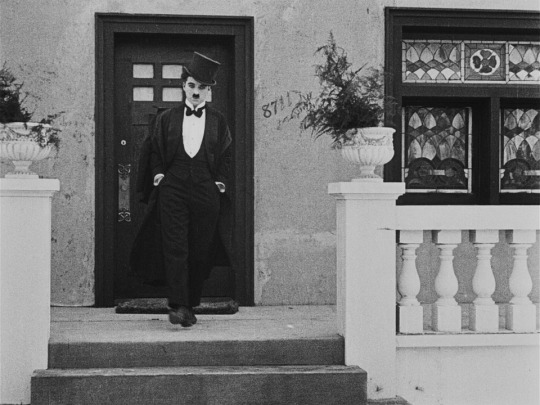
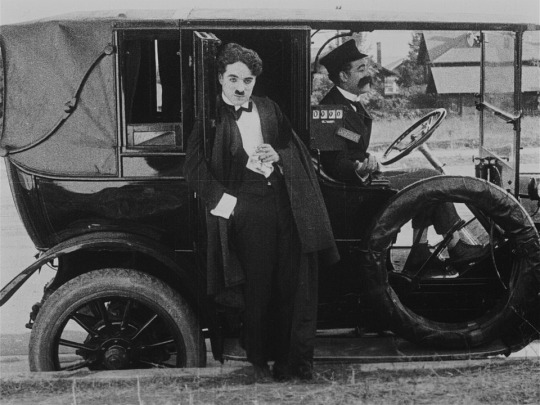

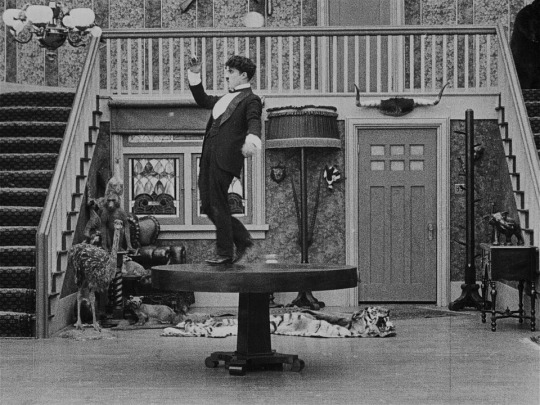
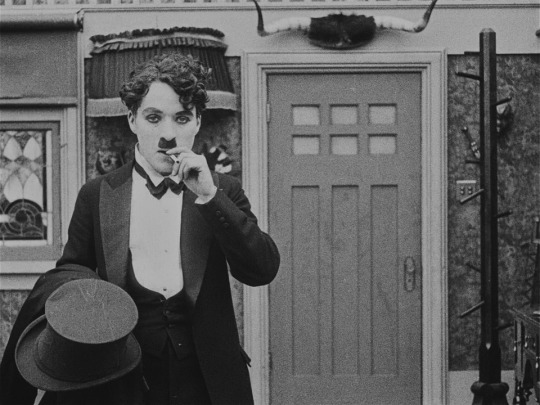
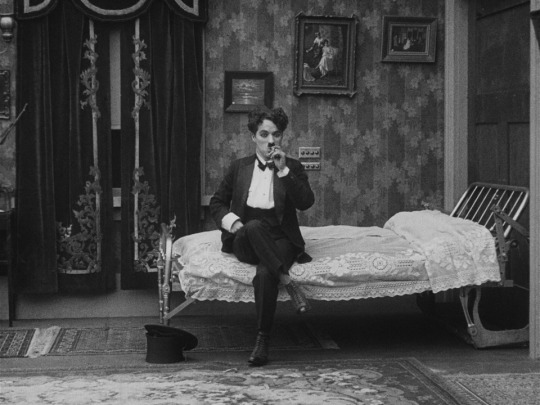

One A.M, Charlie Chaplin, 1916
0 notes
Text
On April 19, 1920, One A.M. debuted in Denmark.

#one a.m.#one a.m. 1916#charlie chaplin movies#charlie chaplin#comedy film#comedy movies#comedy shorts#short film#silent film#black and white film#early film#silent comedy#1910s#1910s film#movie art#art#drawing#movie history#pop art#modern art#pop surrealism#cult movies#portrait#cult film
0 notes
Text

"One A.M." 1916
14 notes
·
View notes
Text
youtube
Charlie Chaplin. One A.M. (1916) / Silent film / Charles Chaplin
0 notes
Text
Foe or Folk Heroine? The Arsonist of Cherry Hill
By: Lisa Timmerman, Executive Director
On Saturday, 04/14/1917, between 2-3am, Cherry Hill Public School went up in flames with rumors of arson spreading like wildfire through the community. The residents of Cherry Hill and the surrounding area immediately pledged their aid in capturing and apprehending the arsonist, including the following persons identified in The Manassas Journal: G.E. Soutter ($5), F.W. Walker ($5), W.M. Sullivan ($5), O. Carney ($5), G.E. Shepherd ($5), H.O. Russell ($10), W.G. Bushey ($5), J.F. Hicks ($5), J.E. Morgan ($5), J.G. Crane ($5), R.A. Oertly ($1), and John O’Neal ($2). While the community vowed to find and convict the culprit, would they feel the same when investigations identified a local schoolteacher as the criminal?
Police and investigators from the Aetna Insurance Company quickly homed in on Cherry Hill Schoolteacher Minnie Keys and the family’s boarder Lawrence Harrison. Historian Ronald Turner summarized the case, “The evidence or the case of the Commonwealth was that Minnie and Lawrence Harrison waited until about 2:30 a.m. before they left the house. Then, they walked through the woods and crossed a small stream before reaching the school. They built a huge fire in and around the stove, located in the center of the one room school. After they were sure the fire was big enough, they retreated into the woods, close to the Keys’ house, to watch the school burn.”

(Cherry Hill Location Map by Ronald Turner, PWC Published Works)
According to Lucy Walsh Phinney, “Cherry Hill residents remember that, following many unsuccessful attempts to obtain supplies and get the building repaired, teacher Minnie Keys set fire to the schoolhouse.” However, The Manassas Journal indicated it was a new school and Turner’s research noted it was built in either 1915 or 1916. The clear outrage of the local populace seems to contradict this version of the story as well. The burned school was near the original and, according to Turner, some parents hoped for a new teacher along with the new building…a motive?
Due to various delays, the Circuit Court case did not go to trial until 04/10/1919 and quickly finished the following day. By this time, Harrison had confessed and testified for the Commonwealth, implicating both him and Keys. After a fifteen-minute deliberation, the jury found Minnie Keys not guilty. While eager to punish in 1917, the fervor had declined by 1919, and perhaps more importantly, the community had a new school. The one-room wooden schoolhouse with metal roof was a community project – parents chopped wood for the wood burning stove and students cleaned the building using a nearby stream for water. Oral histories from former students, such as Edward Dent, note their favorite activities included marbles and fighting. Dent also remembered a parrot named Polly that could speak both English and Greek. The school officially closed in 1938-1939 due to low enrollment with Dumfries Elementary School taking its’ place as Cherry Hill students bussed to Dumfries. Mrs. Nora Tuell purchased the property and eventually sold it to Edward Dent as a family home.

(HDVI Archives: Home of Edward Dents & Family, previously Cherry Hill School)
Robert Waite of Cherry Hill most likely purchased the former burned schoolhouse on 10/28/1927 for $75.00. While acquitted, many people in the community believed she was responsible for arson and eventually her image transformed from suspected criminal to local folk heroine. Whether deserving of the title or not, it is clear that the community looked to the future and eventually crafted a more favorable impression of one of their residents.
Note: Several Juneteenth 2022 activities and celebrations are taking place near and at Historic Dumfries Virginia! On Saturday, the unveiling of the new historical marker at the Dumfries Slave & Free African American cemetery takes place, followed by a Juneteenth Celebration BBQ in Merchant Park sponsored by the PWC Chapter of the NAACP in partnership with Potomac Magisterial District and Pi Lambda Lambda Chapter and Omega Psi Phi Fraternity, Inc. At 1pm, The Weems-Botts Museum is hosting a free program for children with craft items to make flags (tickets required – click here). On Sunday, the Annual Juneteenth Parade will start at 3pm led by Councilwoman Cydny Neville with fellowship, music, and community events happening in Merchant Park until 7pm. More info here!
(Sources: Turner, Ron. Prince William County Published Works: The Burning of Cherry Hill School via his magnificent website https://historicprincewilliam.org/pwcvirginia/pwcvabookspublishedworks.htm; Phinney, Lucy Walsh. Yesterday’s Schools: Public Elementary Education in Prince William County, Virginia 1869-1969, published in 1993; The Manassas Journal, 04/20/1917, Vol. XXII, No. 48; The Manassas Journal, 10/19/1917, Vol. XXIII, No. 22; The Manassas Journal, 04/04/1919, Vol. XXIV, No. 46)
#folklore#localhistory#folktales#arson#schoolhouses#oralhistory#virginiahistory#courtcase#archives#map#teachers#community
0 notes